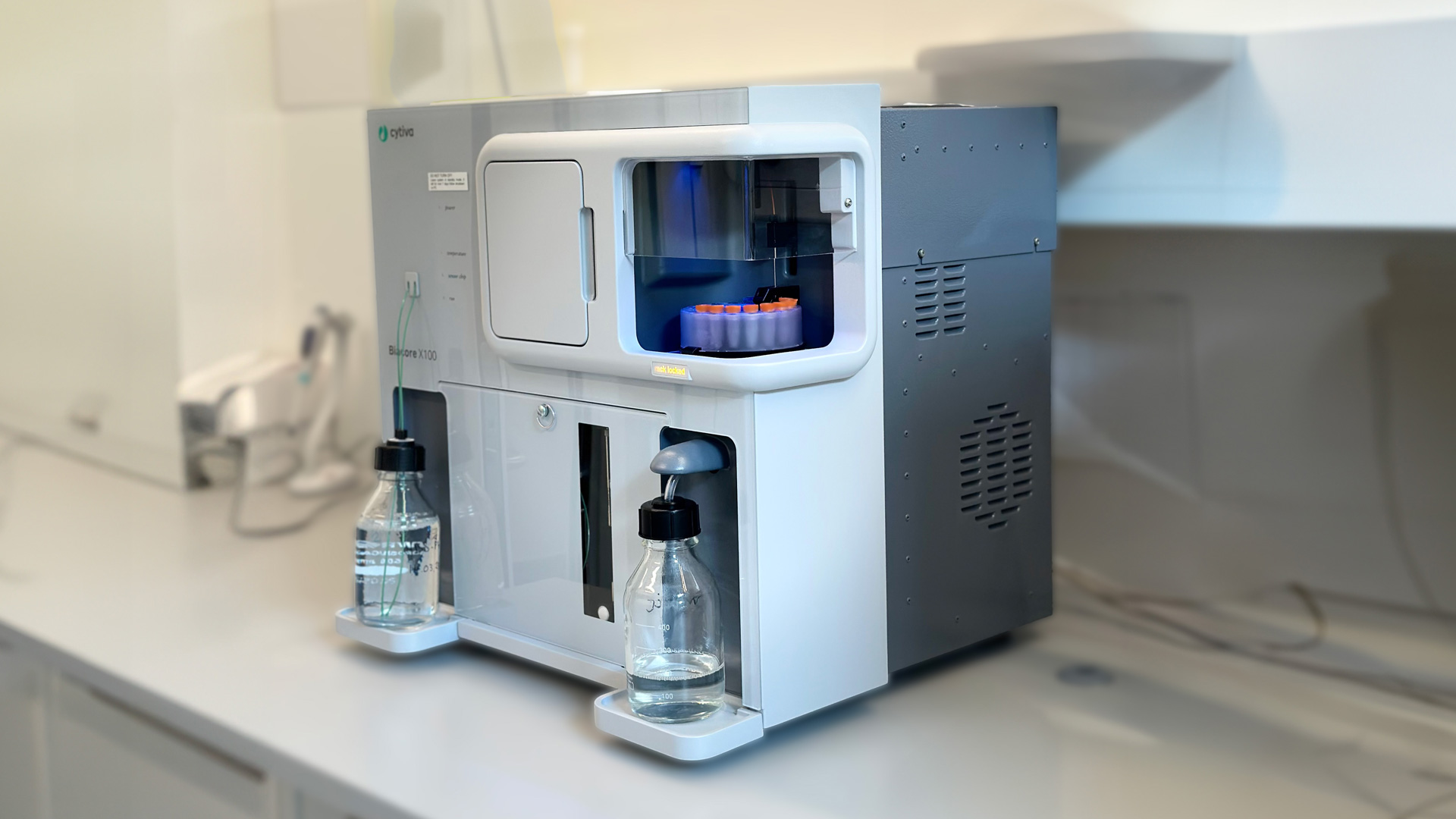Biomolecular interaction analysis (BIA)
Book your SPR studies today and reach initial proof of concept.
The Biacore technology is based on surface plasmon resonance (SPR) measurements. Our Biacore X100 instrument measures label-free and real-time binding between ligands and analytes and provides results on binding affinity, binding kinetics (Ka and Kd) and ligand or analyte concentrations. We use the Biacore X100 extensively at CfD for evaluating and optimizing the performance of our in-house developed aptamer probes as well as antibody probes for detecting pathogens and biomarkers.
Generel procedure:
- The Biacore system is highly customizable and can be fitted to the project assay setup. Design and identification of different assay approaches is therefore an important process when using the commercially available chips from Cytiva.
- Scouting experiments are conducted to find the optimal conditions for ligand immobilization.
- A ligand is immobilized on a sensor chip inserted into the Biacore X100 and the sample containing the analyte flows over the sensor surface. The sensor chip has an inherent reference function.
- Affinity and kinetics experiments are used to measure the interaction between the ligand and analyte, which is detected in real-time by changes in mass concentration close to the sensor surface.
- Binding data are presented in a sensorgram. The built-in software in the Biacore instrument fits the sensorgram data to achieve the Kd and Ka.
Examples of scientific studies conducted at our Biacore SPR facility
- Establishment of a metal chelating binding model for characterization of peptides/hydrolysates related to taste in food products. Studies were conducted using a nitrilotriacetic acid (NTA) chip.
- Binding characteristics of peptide probes to autoantibodies in serum from type 1 diabetes patients using a CM5 chip.
- Binding characteristics of peptide probes to a protein cancer biomarker to validate bioinformatics predictions using a SIA kit (bare gold surface).
- Studies using a CM4 chip and a Protein A chip to identify modifications of mAbs that result in lowered Ka and thereby an increase in Kd towards a protein analyte.
- Studies of enzyme-generated aptamers targeting cancer biomarkers using CM5 chips.
- Binding characteristics of aptamer detection probes to different types of analytes, including small molecules, peptides or proteins using CM5 and streptavidin (SA) chips.
- Binding characteristics of a peptide probe to a hormone using the SIA kit (bare gold surface) and CM5 chips.




